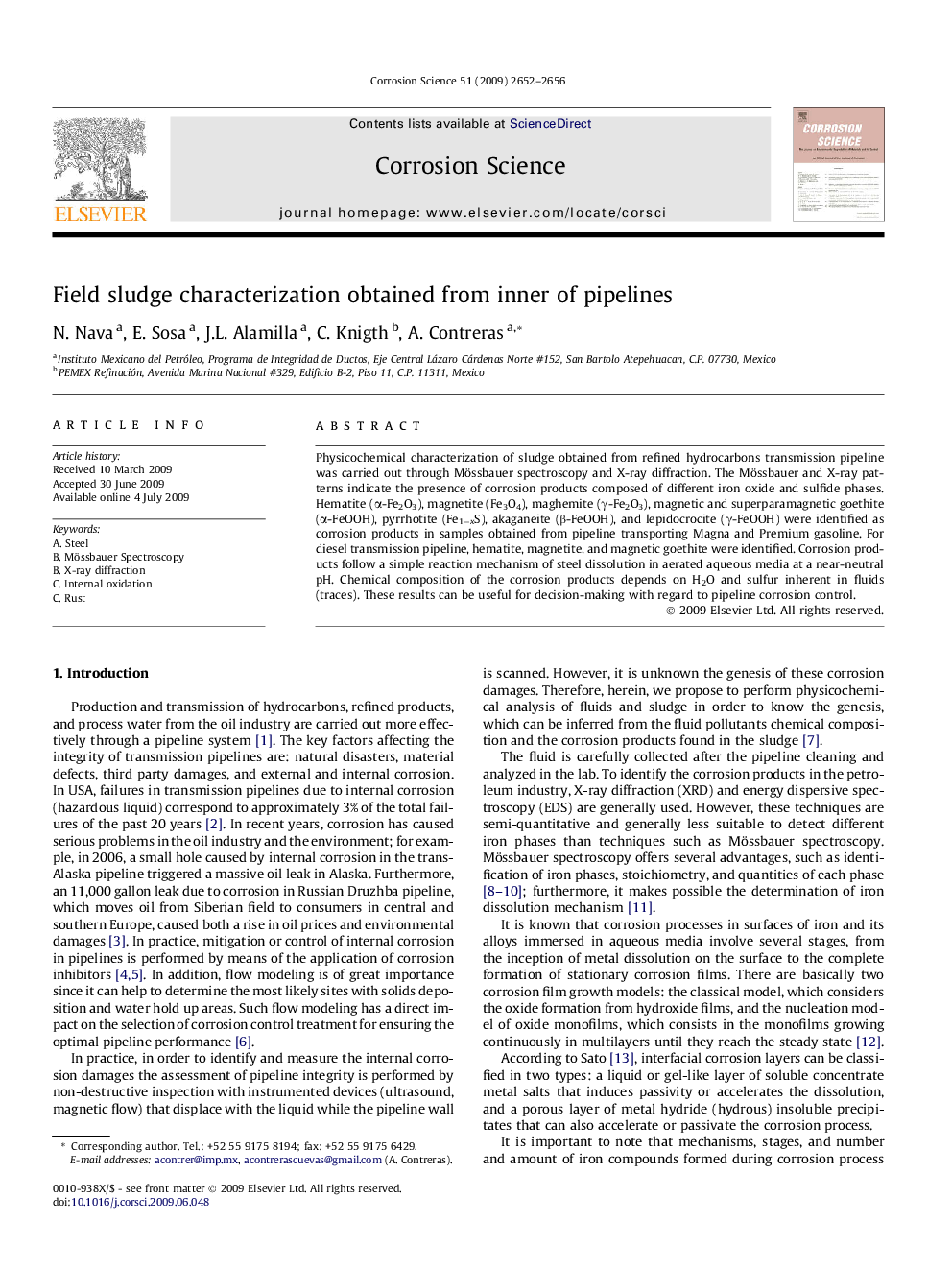| Article ID | Journal | Published Year | Pages | File Type |
|---|---|---|---|---|
| 1470396 | Corrosion Science | 2009 | 5 Pages |
Physicochemical characterization of sludge obtained from refined hydrocarbons transmission pipeline was carried out through Mössbauer spectroscopy and X-ray diffraction. The Mössbauer and X-ray patterns indicate the presence of corrosion products composed of different iron oxide and sulfide phases. Hematite (α-Fe2O3), magnetite (Fe3O4), maghemite (γ-Fe2O3), magnetic and superparamagnetic goethite (α-FeOOH), pyrrhotite (Fe1−xS), akaganeite (β-FeOOH), and lepidocrocite (γ-FeOOH) were identified as corrosion products in samples obtained from pipeline transporting Magna and Premium gasoline. For diesel transmission pipeline, hematite, magnetite, and magnetic goethite were identified. Corrosion products follow a simple reaction mechanism of steel dissolution in aerated aqueous media at a near-neutral pH. Chemical composition of the corrosion products depends on H2O and sulfur inherent in fluids (traces). These results can be useful for decision-making with regard to pipeline corrosion control.
